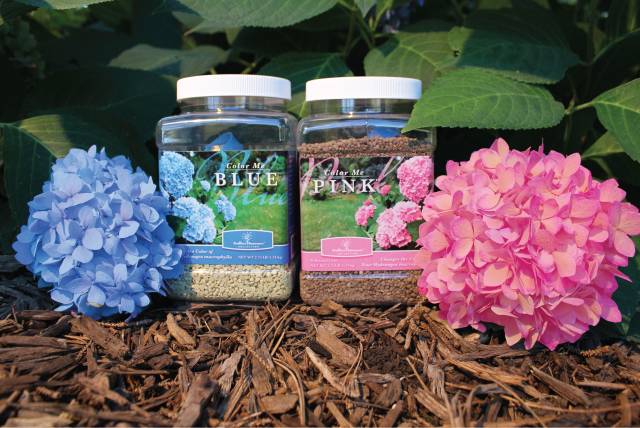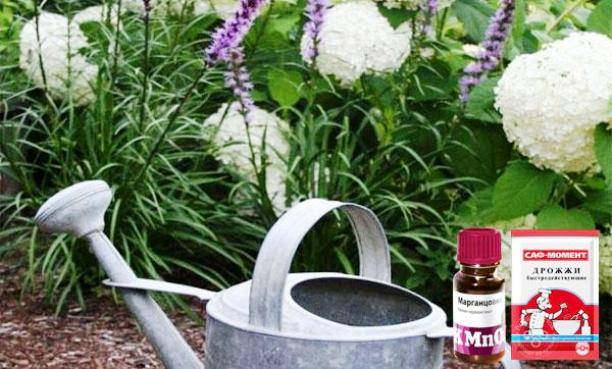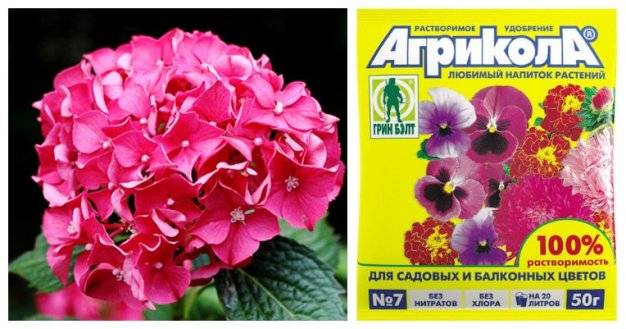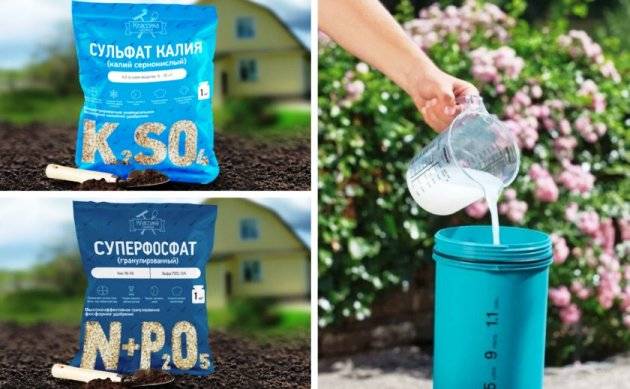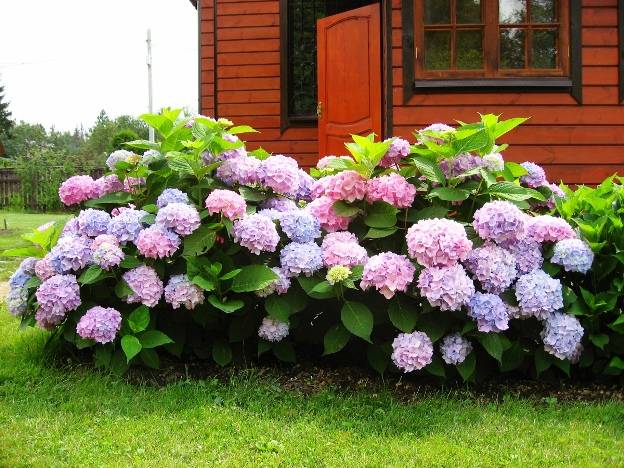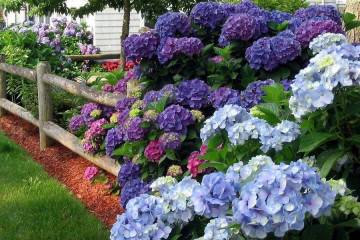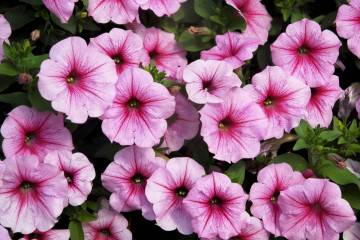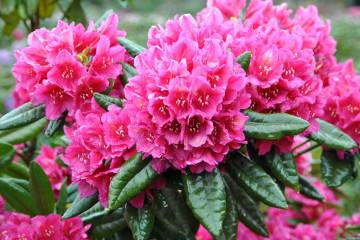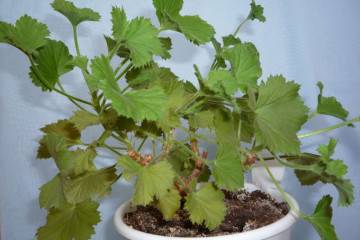How to feed a hydrangea - fertilizers for growth and lush flowering in the garden
Content:
Top dressing is an important moment in the life of a plant. Without adding additional elements of the culture to the soil, they get sick, growth slows down. Plants stop blooming and bearing fruit. Hydrangea is no exception. The shrub is popular with gardeners and ordinary people. Amazingly beautiful large flowers delight others until the first frost. But the beauty of flowering, the strength of the plant and the resistance to frost directly depend on the composition of the soil. Therefore, fertilizers will benefit the flower. How to feed a hydrangea, everyone who grows it should know.
The importance of top dressing in hydrangea care
The flower is fed during the spring-autumn season. The first 2-3 years of life after planting in the garden, the hydrangea is not fertilized. Then trace elements are introduced into the moist soil. How to fertilize hydrangea depends on the purpose of feeding.
For growth
To enhance the growth and development of hydrangeas, nitrogen-containing dressings are introduced. Both mineral and organic compounds are used. However, nitrogen is fed with care. The element gives an enhanced development of the deciduous mass, which draws on itself some of the nutrients needed for the formation of buds. Flowering becomes weak and sluggish.
For lush bloom
The quantity and quality of buds on the bushes, the duration of flowering depend on phosphorus. Potassium is needed for the formation of buds, magnesium for the color of inflorescences. What to fertilize hydrangea for lush flowering is superphosphate at the rate of 20 g per 10 liters of water or the Agricola and Kristalon mineral complexes with a large amount of necessary elements.
In the fight against disease
Plants are unlikely to cope with diseases without feeding. The use of Flower Paradise fertilizer during spring feeding will not only improve the growth of leaves and the quality of buds, but also strengthen the hydrangea's immunity, protect the flower from frost and harmful insects. And phosphorus fertilizers will help fight fungal diseases.
To change the color of the buds
Interesting metamorphoses occur with shades of inflorescences when feeding with certain preparations. When watering pink hydrangeas with a solution of ammonium alum or aluminum at the rate of 4–5 g per 1 liter of water, the flower caps will take on a blue color. To obtain white petals, the earth is fertilized with a mixture of peat and river sand.
What to do before fertilizing
Hydrangea will not be able to properly absorb fertilizers if the soil is not ready. Before feeding, the flower is watered at the root.Instead of abundant watering with plain water, an acidic environment is created. Acidified water is poured into pre-prepared grooves.
Compositions for acidifying the soil:
- on a bucket of water 2 tbsp. tablespoons of citric acid;
- for 10 liters of water 2 glasses of sour dry homemade wine;
- 1 cup of apple cider vinegar per bucket.
The procedure is carried out in the morning, top dressing is applied in the evening. Since mineral fertilizers are added to small trenches around the bush, they are prepared in advance.
Hydrangea dressing options and their dosage
Organic, mineral and complex compounds are used as fertilizers for hydrangeas.
Organic fertilizers
At present, chemical fertilizing is often used, of which there are many on the domestic market. But this is not a reason to abandon the organic matter that hydrangea loves.
Kefir, whey, sour milk
Feeding hydrangeas with kefir and other fermented milk products enrich the bushes with amino acids and increase immunity.
One liter of the product is diluted in 5 liters of water. This composition is watered at the root. If you dilute 0.5 tbsp. spoons of kefir in 10 liters of water, you can carry out foliar feeding, that is, spray the bushes.
Cow dung and bird droppings
A kilogram of droppings are diluted in 20 liters of warm water. The resulting concentrate is again diluted with water in a ratio of 1: 3.
The manure is diluted twice. First, 1 kg of product per 10 liters of water. Then each liter of concentrate is diluted in 2 liters of water.
Bread or yeast feeding
A third of the bucket is filled with dry bread, the rest with chopped weed. Pour in water, cover and leave for a week. After the start of fermentation, the composition is filtered. The concentrate is diluted in a ratio of 1: 5. This fertilization will ensure the growth and flowering of the hydrangea.
For feeding from yeast, combine 100 g of the product, 1 tbsp. a spoonful of sugar and 10 liters of water. Insist day and water the bushes at the rate of 5 liters per plant.
Potassium permanganate
A weak solution eliminates soil microbes. Incoming oxygen nourishes the roots, potassium strengthens the stems of the crop.
For an adult plant, 10 liters of a weak solution for root feeding will be required. In the spring, foliar feeding is carried out with this solution when it comes out of hibernation.
Urea
In a bucket of water, dilute 25-30 g of urea. When watering, the rate per 1 m² is a bucket of the resulting composition.
Vinegar and other acidulants
Vinegar and other acidifiers are used to increase the acidity of the soil. Top dressing is carried out all season, leaving an interval of 20-25 days between them.
Chemical fertilizers
Feeding hydrangeas with chemical preparations is carried out both as a single substance and a complex of elements.
Agricola
Among the complex fertilizers, the drug "Agricola" is successfully used, which contains such important elements as potassium, nitrogen, phosphorus and other minerals. Top dressing is used during active growth and flowering and has a powerful effect on crop development. The drug is divorced and applied according to the instructions for it.
Nitrophoska
This is another complex top dressing with a mineral content. It is used in the summer, well protects hydrangea from harmful insects, protects against untimely falling of leaves and flowers.
When to feed hydrangea: timing and fertilization schedule
According to the generally accepted scheme, the flower is fertilized during the following periods.
Spring for active growth
During this period, hydrangea needs nitrogen. Use nitrate, urea, ammonium sulfate and other similar drugs. From about 9 to 21 April, to build up green mass and form beautiful leaves, the bushes are fed with the following composition: they dissolve 20 g of urea and the same amount of potassium sulfate in a bucket of water. Up to 5 liters of solution are applied under the garden plant.
In the summer during budding
During the period of bud formation and the appearance of flowers, the soil is fertilized with mineral compounds - phosphorus and calcium. Complex fertilizers are introduced, and organic matter is added in the middle of summer.
How to feed hydrangea in June. From 5 to 17 June, fertilized with superphosphate, potassium, complex fertilizers are introduced. In July, organic matter alternates with complex compounds, and from August 4 to August 29, the soil is acidified with lactic acid.
In the fall to prepare for wintering
The wintering of hydrangeas and future flowering depend on autumn feeding.
How to water a hydrangea to book flower stalks? From September 3 to September 15, they are watered with potassium-phosphorus and magnesium-boric compounds without adding nitrogen. Before hibernation, they are fed with the following fertilizer: dilute 20 g of sulfuric acid powder in a bucket of warm water and the same amount of the drug containing superphosphate.
Consequences of deficiency and excess of fertilizers
The lack of nutrients is determined by external signs. How hydrangea changes with a deficiency of fertilizers:
- nitrogen is a weak, slowly growing plant with yellow leaves;
- potassium - dark spots on the leaves, a yellow drying border;
- phosphorus - leaves turn purple;
- iron - chlorosis of leaves, color change to pale yellow;
- soil acidity - chlorosis.
They urgently select and apply the necessary fertilizer for hydrangeas within reasonable limits. An excess in this case is unacceptable.
What does an excess of chemical fertilizers lead to:
- nitrogen - to a decrease in frost resistance. Hydrangea will not be able to bloom, since all supplies are given for the growth of the crown;
- potassium - to early yellowing of leaves, loss of decorativeness of inflorescences;
- phosphorus - to poor absorption of trace elements, increased sensitivity to drought;
- calcium - to block the absorption of potassium and magnesium.
And only thanks to preliminary watering it will be possible to normalize the level of trace elements and make the plant grow properly.
How to feed hydrangeas depends on your goals. The flower grower will decide for himself which fertilizers are suitable in a particular case. But it is necessary to carry out systematic feeding. Only in this case, the appearance of the plant will please the eye, the hydrangea will not hurt, it will successfully endure the winter and will meet the spring in good condition.
